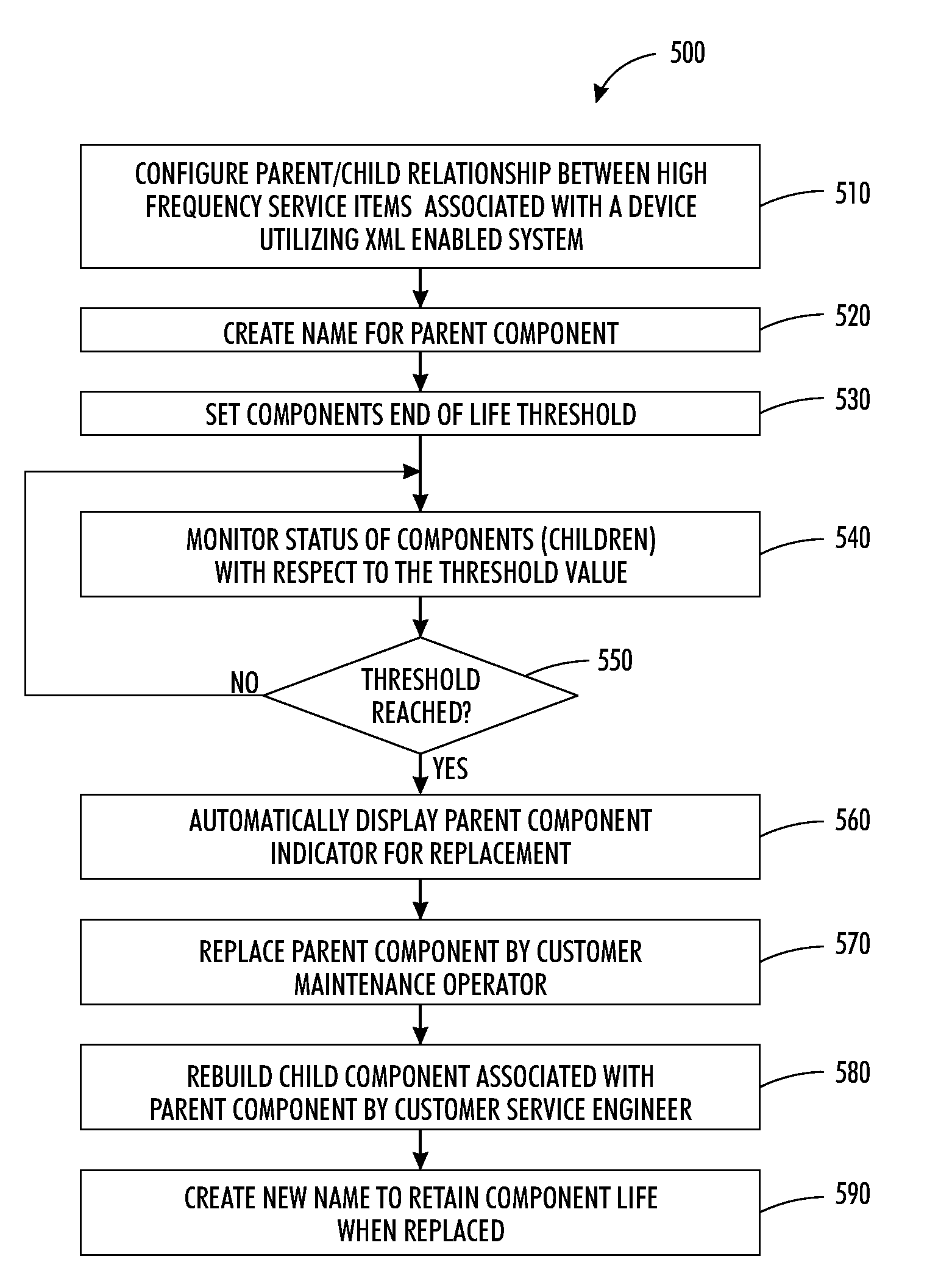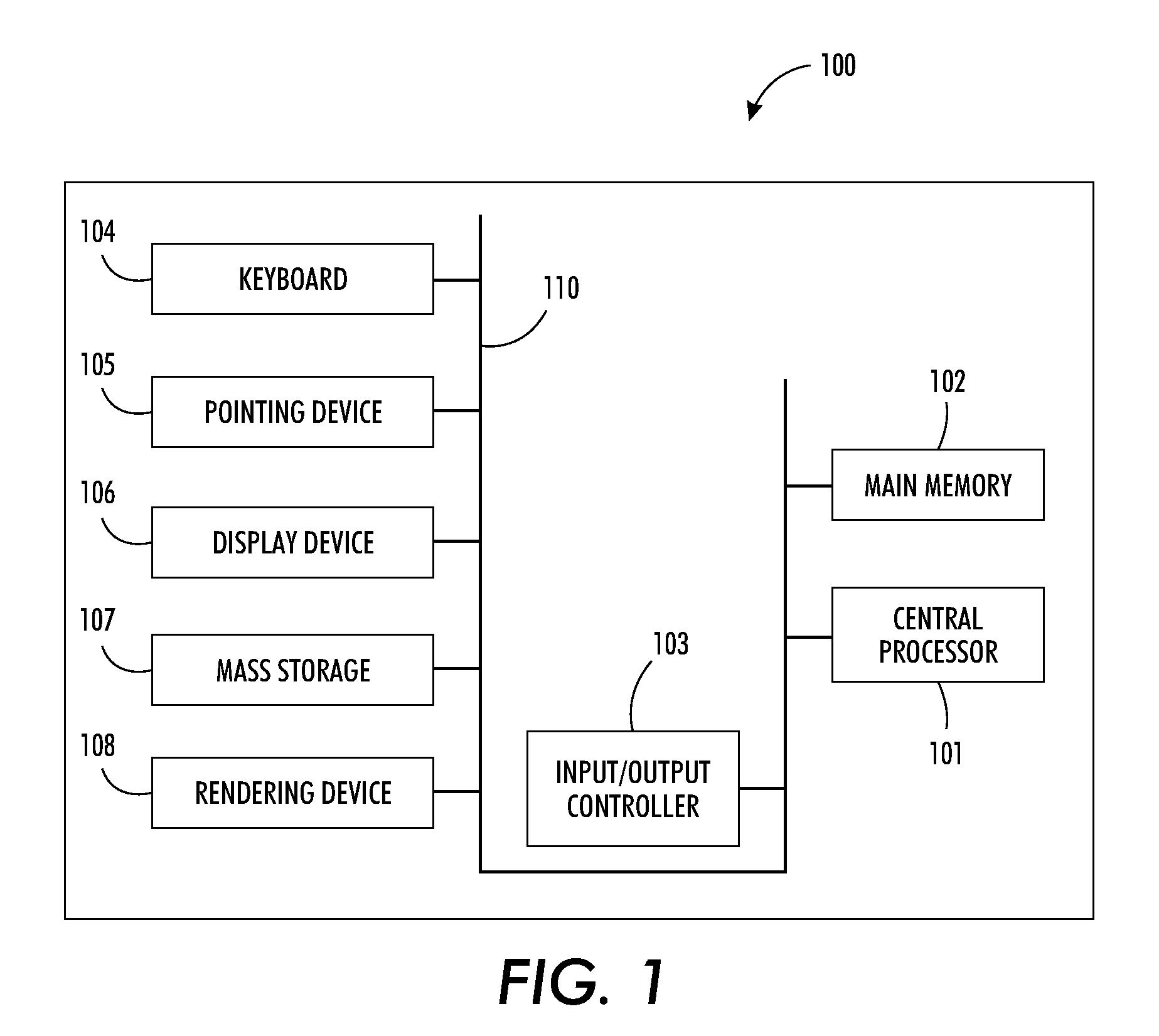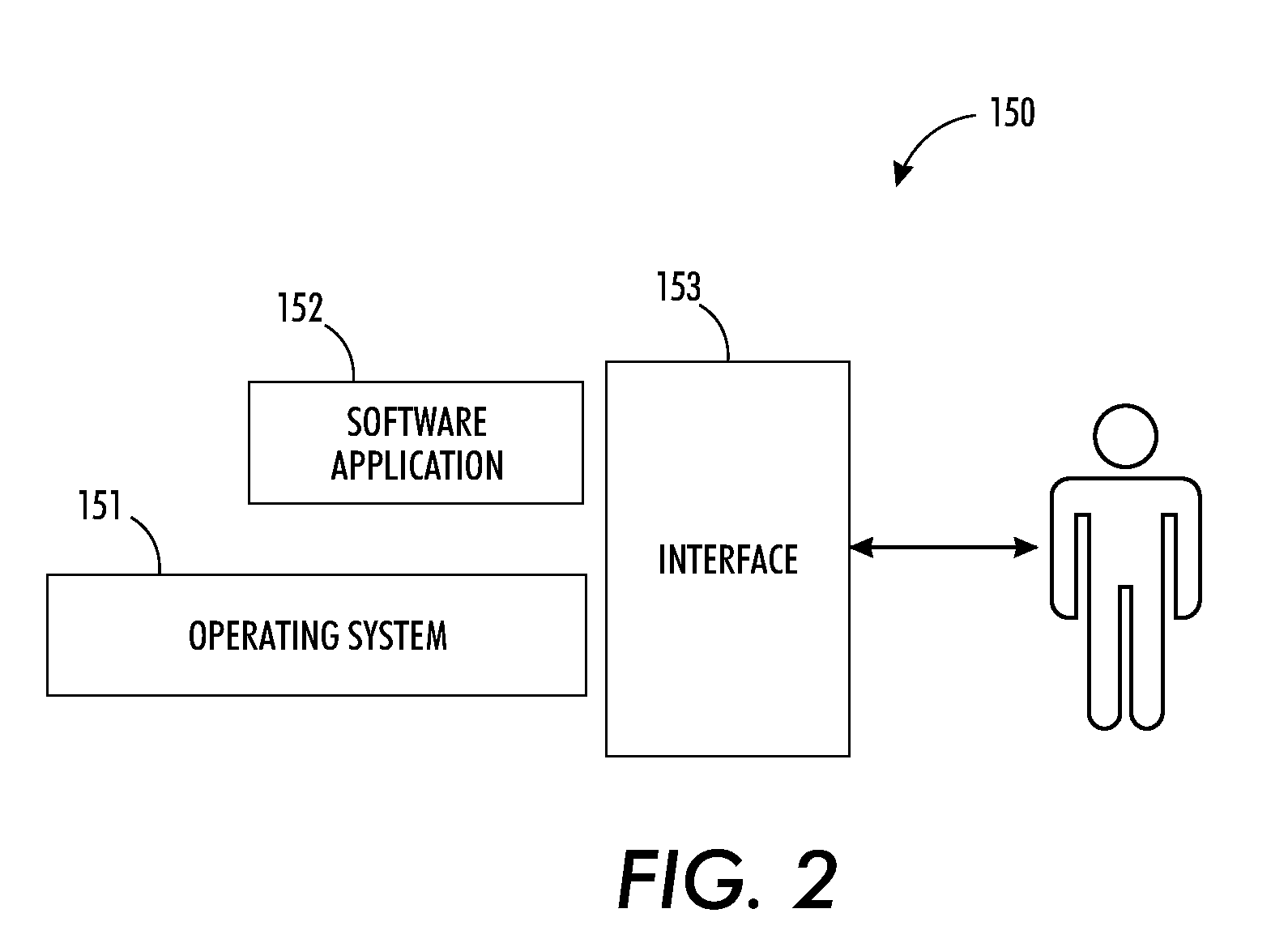Method and system for managing service intervals for related components
a technology for related components and service intervals, applied in the direction of instruments, electrographic process equipment, optics, etc., can solve the problems of component wear with usage and eventually may require replacement, components that wear with usage and may need to be replaced, and certain measures of useful life are being wasted, so as to maximize the utilization of parts and the reliability of the device
- Summary
- Abstract
- Description
- Claims
- Application Information
AI Technical Summary
Benefits of technology
Problems solved by technology
Method used
Image
Examples
Embodiment Construction
[0020]The particular values and configurations discussed in these non-limiting examples can be varied and are cited merely to illustrate at least one embodiment and are not intended to limit the scope of such embodiments.
[0021]FIGS. 1-3 are provided as exemplary diagrams of data processing environments in which embodiments of the present invention may be implemented. It should be appreciated that FIGS. 1-3 are only exemplary and are not intended to assert or imply any limitation with regard to the environments in which aspects or embodiments of the present invention may be implemented. Many modifications to the depicted environments may be made without departing from the spirit and scope of the present invention.
[0022]As depicted in FIG. 1, the present invention may be embodied in the context of a data-processing apparatus 100 comprising a central processor 101, a main memory 102, an input / output controller 103, a keyboard 104, a pointing device 105 (e.g., mouse, track ball, pen dev...
PUM
 Login to View More
Login to View More Abstract
Description
Claims
Application Information
 Login to View More
Login to View More - R&D
- Intellectual Property
- Life Sciences
- Materials
- Tech Scout
- Unparalleled Data Quality
- Higher Quality Content
- 60% Fewer Hallucinations
Browse by: Latest US Patents, China's latest patents, Technical Efficacy Thesaurus, Application Domain, Technology Topic, Popular Technical Reports.
© 2025 PatSnap. All rights reserved.Legal|Privacy policy|Modern Slavery Act Transparency Statement|Sitemap|About US| Contact US: help@patsnap.com



